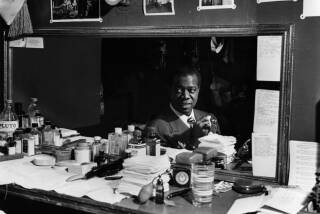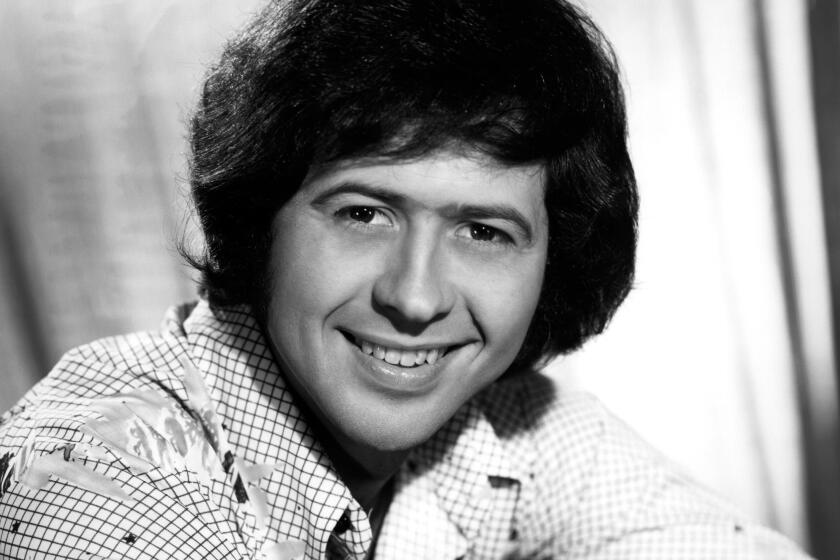Match the Player With the Composer
Every now and then--maybe when Jupiter aligns with Mars, or the moon is in the seventh house--a number of jazz players seem to spontaneously come up with similar ideas. This month is a good example. How else to explain the near-simultaneous release of albums featuring Dave Grusin, with orchestra, playing Henry Mancini; McCoy Tyner, with orchestra, playing Burt Bacharach; and Randy Weston, with orchestra, playing Randy Weston.
OK, the Weston album is a bit different. But, like the others, it features a talented jazz player performing the work of a single composer in a relatively lush setting. And what is so striking about these three albums is the fact that, despite the settings and despite--at least for Tyner and Grusin--the presence of the repertoire of another composer, each pianist maintains a solid handle on his individual style.
Tyner has to make the biggest stretch. Performing with a “Symphony Orchestra,” with John Clayton conducting his own arrangements, Tyner--who benefits from the presence of bassist Christian McBride and drummer Lewis Nash--doesn’t have a lot of room to expand. Clayton’s arrangements are extraordinarily lush, filled with gorgeous carpets of strings, woodwinds and soaring French horns, reminiscent of Nelson Riddle’s charts for Sinatra. And Bacharach’s artfully constructed tunes, with their leaping intervals and shifting rhythms, make their own demands.
The result is one of Tyner’s most unusual outings. If it lacks the percussive chording and outside rhythms that jazz fans associate with his past work, it nonetheless reveals the remarkable breadth of Tyner’s skills--his subtle tonal touch on ballads such as “One Less Bell to Answer” and “A House Is Not a Home,” his capacity to find a groove within dramatic settings such as “Always Something There to Remind Me.” And if the Bacharach framework helps to bring some new listeners to Tyner’s more straight-ahead jazz work, that wouldn’t be too bad, either.
Weston, who also plays with the ubiquitous McBride and the equally busy Billy Higgins on drums, remains close to his jazz roots, performing charts written by Melba Liston. The arrangements, for 24 strings from the Montreal Symphony Orchestra, are cushiony backgrounds that fully permit Weston to remain within his quirky, idiosyncratic jazz style, tossing off occasional oblique, Thelonious Monk-like rhythms, unusually voiced chordal dissonances and sudden shifts of rhythm.
Four of the tunes--including his now classic “Little Niles”--are waltzes, a meter that seems to flow particularly well in Weston’s compositional perspective. And he brings a completely different take to “Hi-Fly,” his up-tempo standard, doing it as a slow, grooving ballad.
The result is a particularly insightful view of Weston, a performer who, despite his enormous skills, has not had an especially high visibility. His attractive playing in this showcase rendering of his compositions provides an appealing introduction for those unfamiliar with his always enticing music.
Grusin and Mancini are a predictably compatible pairing. The album’s potential impact is perhaps best indicated by the fact that it has already leaped to the top of the “Traditional Jazz” chart. And there’s no denying the album’s appeal. Mancini was a brilliant melodist with a rare sense of humor and Grusin has chosen a program rich with such lovely melodic numbers as “Days of Wine and Roses” and the stunning “Two for the Road,” leavening it with the whimsical “Baby Elephant Walk” and the fun of “Peter Gunn.”
Grusin is a solid player with a nice rhythmic touch--skillful far beyond his image as a film composer, producer and businessman. And he has surrounded himself with a group of players--John Patitucci, Russell Malone and Eric Marienthal among them--who add brief, attractive touches of their own. Best of all, Grusin has also included some lovely, lesser-known Mancini tunes--”Whistling Away the Dark” and “Moment to Moment” are a couple--and two ravishing vocals by the talented Diana Krall.
*
Albums are rated on a scale of one star (poor), two stars (fair), three stars (good), four stars (excellent).
More to Read
The biggest entertainment stories
Get our big stories about Hollywood, film, television, music, arts, culture and more right in your inbox as soon as they publish.
You may occasionally receive promotional content from the Los Angeles Times.










